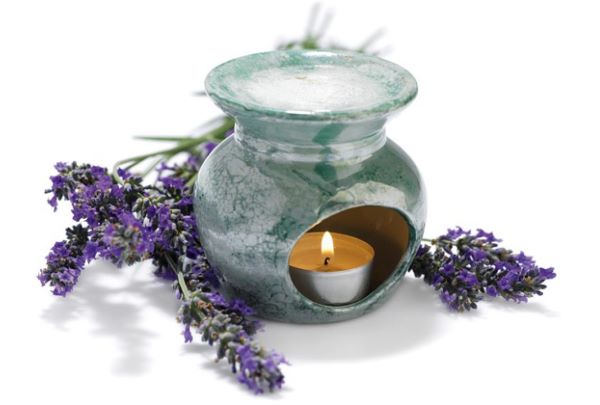When it comes to fragrances in the home, don’t ignore the rule of thumb, and don’t overdo it. Many of our warmest childhood memories are connected with certain smells, such as the aroma of cookies baking, lavender on a pillow, or rose fragrances. Therefore, you need to bring back treasured memories—and create new ones—with flowers, herbs, potpourises, or fragrance sachets.
You don’t need artificial products such as air fresheners or fragrance oils to produce pleasant home scents. If you are prepared to do some research, there are plenty of natural remedies available, and the benefits include pleasant scents without the use of harmful chemicals.

Natural fragrances
Remember the basic rule: Don’t overdo it. It is easy to become accustomed to certain fragrances and use too much of them. Here are some tips and tricks.
-
On a table in the corner, arrange a large bouquet of fresh flowers, preferably lilacs, roses, or lilies. It will fill a living or dining room with a wonderful scent.
-
Hang herbs such as rosemary, peppermint, or thyme to dry from a ceiling or balcony. They give off a pleasing aroma.
-
Fill an attractive bowl with fruit and spices, such as oranges, limes, green apples, cinnamon, and cloves. It will look decorative and fill the room with intriguing smells.
-
Make a potpourri using dried flowers and leaves from aromatic plants. Rose petals, jasmine, lilies, lavender, rosemary, cinnamon sticks, and vanilla pods are wonderful additions. Set them out in open bowls or fill a sachet; just make sure all ingredients are thoroughly dried beforehand. To intensify the fragrance, add a drop or two of essential oil.
-
Assemble your potpourris from dried flower petals, fruit, herbs, and spices. A sachet or small cushion filled with them makes a special gift.
-
In winter, place orange and lemon slices near a heater and let them dry there.
-
Use scented candles to create a soft, warm, or romantic atmosphere. They don’t have to smell of roses or vanilla—even plain beeswax candles emit a distinctive fragrance.
-
Try burning incense. One of the earliest known ceremonies is using smoke to deliver prayers to the gods; it is used in paganism for bonfire rituals as well as religious censers. But incense sticks don’t have to be about religion—they are a good way to spread scent through a room or opt for an essential oil burner. They are available in several shapes, but the principle is always the same.
A candle is placed under a plate or small bowl, which is filled with water and a few drops of essential oil. The flame warms the water-oil mixture and spreads the fragrance throughout the room.
-
Make a scent ball: Spread glue on a polystyrene ball and fasten dried flowers from a potpourri on it. • Stud an orange with cloves and pieces of a cinnamon stick. Tie with ribbon and hang up as a pomander.
-
Create a simple fragrance dispenser: Fill a lidded jar with rose petals and sprinkle each layer with salt to prevent them from rotting. When you wish to add fragrance to a room, unscrew the jar for a while.






